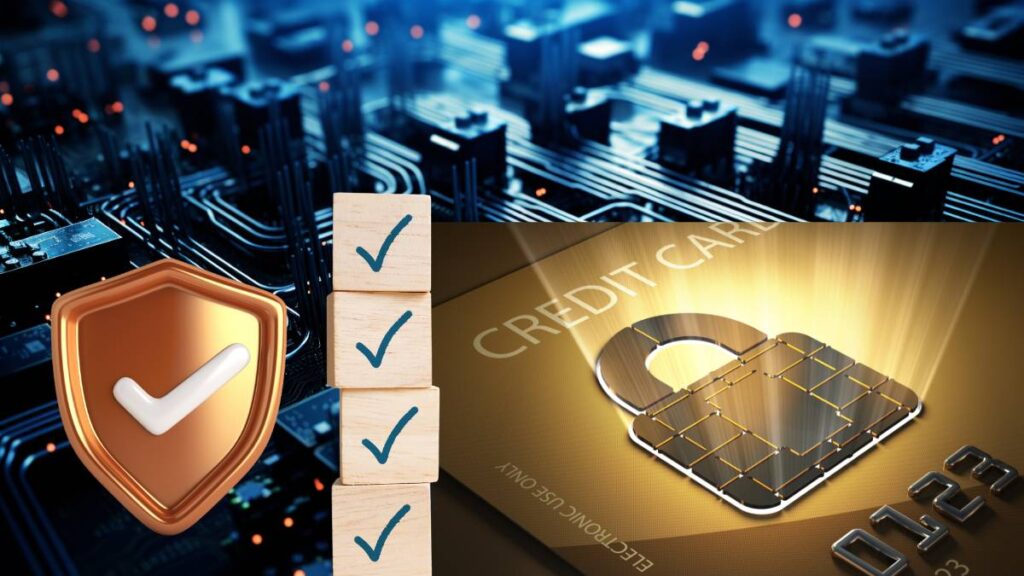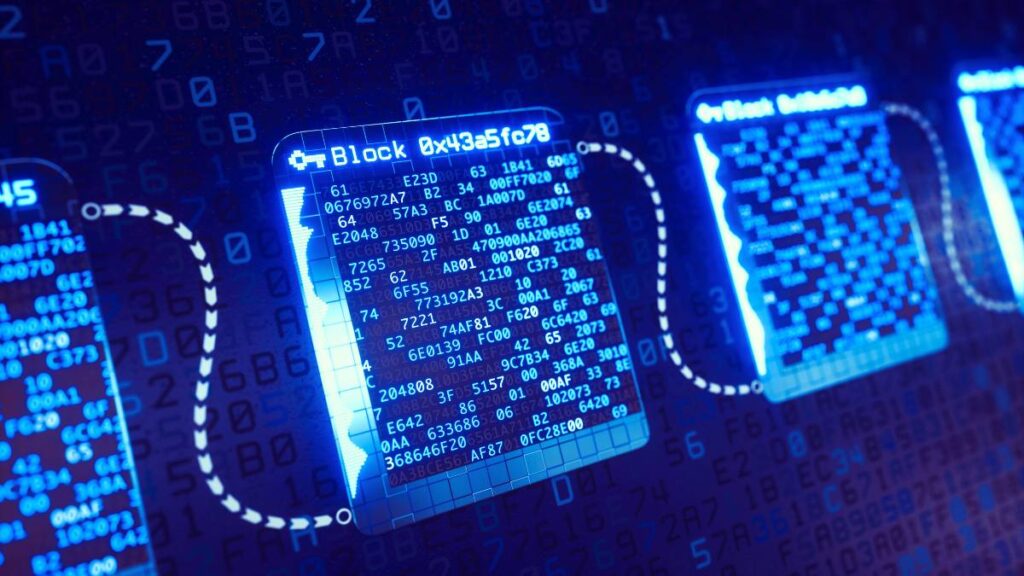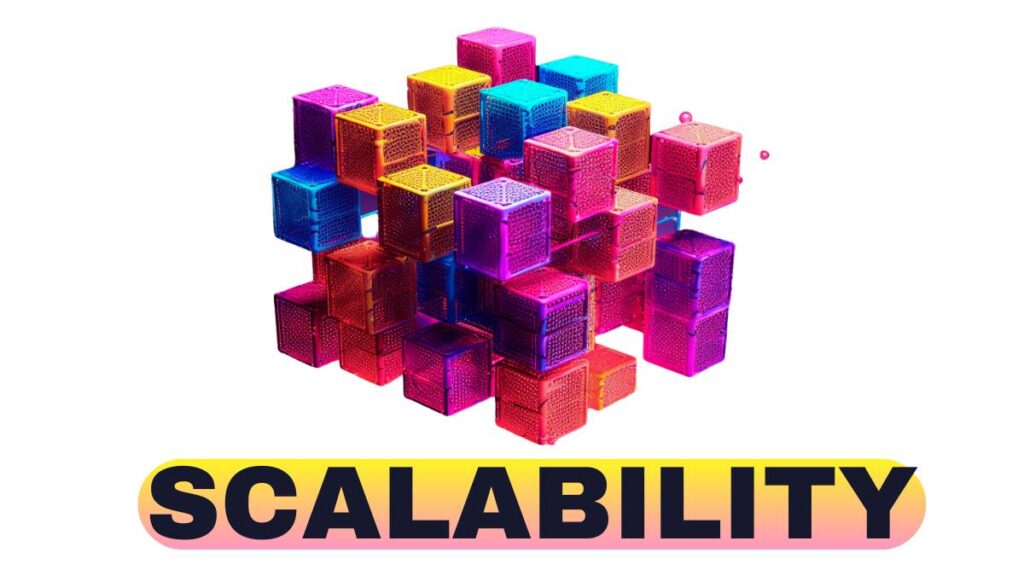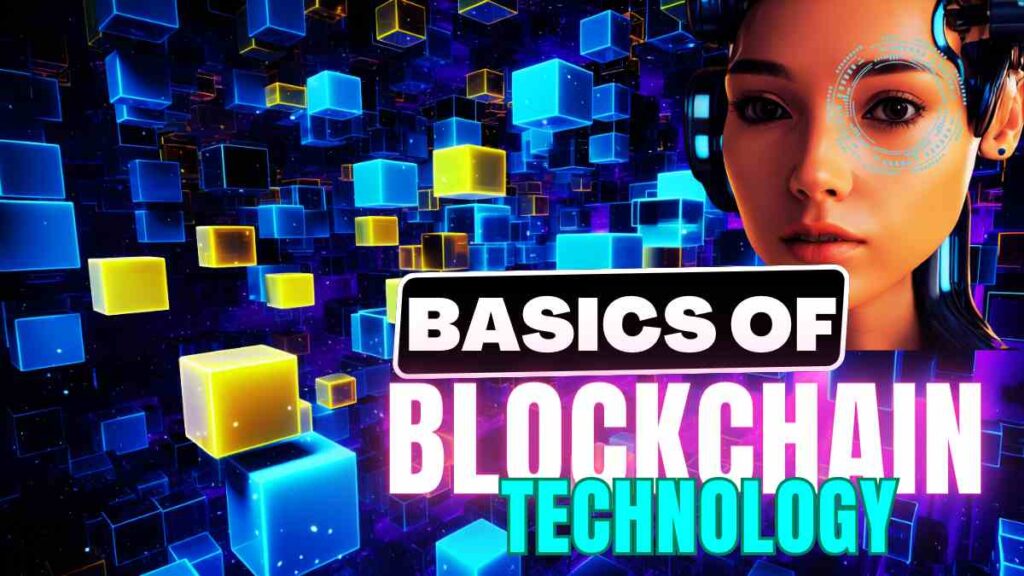Blockchain technology is a hot topic these days. You may be familiar with the term “Blockchain” in relation to cryptocurrencies like bitcoin or other altcoins like “Ada”. Nevertheless, blockchain has many other potential use cases.
Basically, the blockchain is a decentralized ledger that keeps a progressively growing list of transaction records called blocks. Furthermore, to verify and process transactions the Blockchain technology does not require a governing body like central banks. Instead blockchain makes use of a decentralized or distributed peer-to-peer(p2p) network technology. In this network, transactions are verified and stored through the coordinated efforts of all the participants, not by a single centralized party. The blockchain verifies and stores transactions in a secure and transparent manner.
What is blockchain technology?
Blockchain is an autonomously functioning registry of encrypted batches of confirmed transactions called blocks. This distributed ledger holds a sequential and chronological account of every single transaction ever executed between participating nodes since the first genesis block was created. Since the Blockchain network permits multiple parties to have a shared and trusted record of all transactions, the need for a central authority is jettisoned. Every block has an automated timestamp and a link to the preceding block in the chain.
It is extremely difficult to modify or delete that information, after a block transaction is recorded on the blockchain. New Blockchain transactions are recorded in new blocks that are added to the chain.
Once a block of transactions is recorded, it’s very difficult to modify or remove it. New transactions are recorded in new blocks that are added to the chain. Blockchain relies on cryptographic techniques to ensure that new blocks are appended properly and that the ledger is secure. This makes blockchain a promising technology for various applications like cryptocurrencies, supply chain management, healthcare records management, and more.
How does blockchain technology work?
For a blockchain transaction to happen, the following things need to occur:
Someone initiates a transfer: This could mean someone wants to send cryptocurrency to another person or wants to update the conditions of a smart contract. The details of the transaction are shared with the network. The request is broadcast out to all the computers (nodes) linked together in the blockchain network. Since the Blockchain network operates in a peer-to-peer (otherwise called p2p) manner, the need for a central clearinghouse left out.

The transaction is verified: The network of computers on the blockchain verify the transaction using known algorithms. This involves checking that the transaction is properly formatted, the user has enough funds to complete the transaction, and ensuring the same funds aren’t being spent twice.

The transaction is combined into a block: Verified transactions are bundled together into a single unit called a “block”. All the blocks contain a timestamp that shows when it was created. It also shows a link to the previous block. This link is connecting it in chronological order to the chain of blocks that came before it. By combining verified transactions into blocks and linking the blocks together in a chronological chain, the blockchain creates an immutable and transparent record of all transactions.

The new block is given a cryptographic summary that acts as a digital fingerprint. This summary is called a hash: The hash is created by running all the information in the block – like the transactions, the timestamp and the link to the previous block – through a hashing algorithm. This produces a unique string of characters that acts as a digital fingerprint for that specific block.

The block is distributed: The updated blockchain with the new block is distributed to all participants in the network. The block can now be validated and the new ledger updated on each node.

Transactions are complete: The block, along with the transaction it carries, is securely recorded on the blockchain. The funds have been transferred.
This entire process happens automatically using a consensus algorithm to ensure all participants agree on the current state of the blockchain. Cryptographic techniques like hashing are used to secure the blockchain and keep it transparent.

Consensus algorithms
Blockchain networks use consensus algorithms to validate transactions and blocks. The most common ones are:

Proof of Work (PoW): Adopted by Bitcoin and some altcoins, this method necessitates validators to tackle computational puzzles to affirm swaps and grow new batches. It needs loads of electricity but is very hack-resistant due to the complex calculations involved in producing each new block. Miners who crack the codes first are rewarded with new coins.
Proof of Stake (PoS): Validators lock up funds as stake. The more you stake, the more you can validate and receive rewards. Efficient but can lead to consolidation of power. Examples are Ethereum 2.0 and Tezos.
Delegated Proof of Stake (DPoS): Like PoS but validators are elected delegates who validate and maintain the network. Fast and energy efficient but also can consolidate power. Examples are EOS and Tron.
Practical Byzantine Fault Tolerance (PBFT): Validators work together to reaches consensus on the blockchain state. Can withstand a certain number of malicious or incorrect validators. Private and consortium blockchains often use PBFT.
Key properties of blockchain technology
The control of the blockchain is not embodied in a single person or organization: Instead, it is decentralized and distributed across many nodes or participants in the network.

Transparent and secure: All transactions are transparent and visible to participants. New blocks are secure and bound to previous blocks, making the ledger tamper-resistant.
Irreversible: It is nearly impossible to reverse transactions and blocks once they have been recorded to the blockchain. This makes the blockchain a system of record and builds trust in the network.
Anonymous: Participants can remain anonymous since keys and addresses are primarily numbers. However, blockchain can also be implemented in a private and permissioned manner.
Fast and efficient: Consensus protocols and cryptographic techniques allow blockchain networks to securely and efficiently handle high transaction volumes. Settlement can happen in seconds or minutes rather than business days.
Cost-effective: Blockchain significantly reduces transaction fees and overhead by removing third-party intermediaries. Administrative costs are lower.
Immutable: Blockchain data is resistant to modification. This makes blockchain a system of record and builds trust.
Interoperability: Several blockchain networks are working to build interoperability by implementing performance and feature improvements. This will increase overall functionality and adoption.
Types of blockchains
There are 3 main types of blockchains:

Public: Anyone can access a public blockchain network and participate in validating transactions. Examples include Bitcoin and Ethereum. Public blockchains aim for openness and transparency.
Consortium: A consortium blockchain is partially decentralized, controlled by a group of organizations. It allows only specific nodes operated by consortium members to validate transactions and add new blocks. Examples include blockchains used for supply chain management between companies.
Private: A private blockchain is fully centralized and controlled by a single organization. Only selected nodes have permission to validate transactions and add new blocks. A private blockchain aims to provide a secure and trusted record-keeping system for that particular organization.
Scalability of blockchains
Reaching a level of scalability that allows for wide adoption and real-world use is a teething problem in the blockchain technology is. In simple words, scalability refers to a blockchain network’s ability to handle higher transaction volumes and more users – something most blockchains still struggle with, posing a major challenge for wider adoption. Some scalability solutions include:
- Sharding: Splitting the blockchain network into smaller partitions that can process transactions in parallel. Ethereum 2.0 will use sharding.
- Plasma: Using sidechains anchored to the main blockchain to handle the majority of transactions. Solves scalability and secrecy issues.
- Channels: Moving transactions off-chain and using the blockchain only for settlement. Payment channels like Bitcoin’s Lightning Network use this approach.
- Consensus algorithms: Some consensus algorithms are more scalable than others. DPoS and PBFT can handle higher transaction volumes than PoW.
- State channels: Like payment channels but can also manage more complex smart contract interactions off-chain, only using the blockchain periodically to record the final state.
Fragments: Distributing blockchain data across multiple smaller chains that can operate in parallel. Fragments are interoperable through protocols that allow communication between fragments.
How Blockchain Technology Can Enhance Data Security and Prevent Fraud
The way data is secured and managed has been changed by the emergence of the Blockchain technology. Blockchains offer a higher level of security against fraud and cyber-attacks by recording transactions in a distributed and transparent manner. The ledger is shared and updated across many computers, with no single point of control or failure. This makes the blockchain virtually un-hackable as there is no central server that can be compromised.

Preventing Data Tampering and Fraud
The difficulty to modify or remove data stored with the blockchain technology makes the blockchain an ideal solution for preventing data tampering and fraud. Some potential use cases include:
Securing medical records
Patient medical records can be stored on the blockchain, giving patients full control and transparency over who accesses their data. The records are secured from deletion or modification, reducing the risks of data tampering or fraud.
Tracking luxury goods
Blockchain technology has the potential to help reduce the trade in counterfeit luxury goods. By recording information about authentic products on the blockchain, it becomes easier to verify their authenticity and prove who rightfully owns them. Each product gets recorded on the blockchain along with its attributes, and buyers can easily trace the digital records to confirm the product’s authenticity.
Protecting digital assets
Blockchain can be used to store records of ownership and the history of transactions for digital assets like media files, domain names, event tickets, loyalty points, etc. This prevents duplicate redemption or unauthorized transfer of assets.
Securing voting systems
Voters can cast votes on the blockchain, and their votes get added to the distributed ledger in a verifiable manner. This reduces the risks of vote tampering, while the transparency of blockchain allows for easy audits and recounts. Voter fraud is also prevented since voters can only cast one vote each.
Enhancing Cybersecurity
Blockchain technology strengthens cybersecurity in several ways:
Robust encryption: Data on the blockchain is encrypted using strong cryptography to ensure it is unreadable to unauthorized parties. This protects the data even if there is a successful hack.
No single point of failure: The distributed nature of blockchain means that there is no central server or system to hack. Cybercriminals would have to hack into multiple systems across different locations simultaneously to compromise the blockchain. This is nearly impossible to achieve.
Permanent and auditable records: The blockchain acts as an auditable and tamper-proof record of all transactions and activities. This allows detection of suspicious behavior or anomalies and can help prevent cyber fraud.
Secure Digital Identity: How people prove and manage their digital identities has been revolutionized by the Blockchain technology. Users can control their identity data and share it with third parties seamlessly without trusting a central authority. This reduces identity theft and fraud.
Smart contracts: Blockchain supports smart contracts – autonomous applications that can execute peer-to-peer digital agreements securely without an intermediary. This reduces the attack surface for hackers and malware. Bugs can also be identified more easily in the open-source smart contract code.
Potential Vulnerabilities and Solutions
While blockchain technology improves security significantly, some potential vulnerabilities still exist:
Private key vulnerability: If a user loses their private key, they lose access to their blockchain data and digital assets permanently. Strong key management practices need to be followed to avoid key loss. Multi-signature wallets can also reduce dependence on a single key.
Code vulnerabilities: There are risks of bugs and vulnerabilities in the blockchain codebase that could be exploited by hackers. Robust open-source security practices, audits, and bug bounty programs can minimize code vulnerabilities.
Quantum computing threats: Future advances in quantum computing may potentially pose a risk to current blockchain security which relies on computationally intensive algorithms. New quantum-resistant cryptography can be implemented to address such future threats.
Conclusion
In conclusion, blockchain technology offers a transformational approach to enhancing data security and cyber protection through its innovative distributed and decentralized infrastructure. While blockchain is still a nascent technology, it holds significant promise for tackling vulnerabilities that plague current centralized systems.
With no single point of failure and strong encryption protecting its distributed digital ledgers, blockchain networks are virtually impenetrable to hackers. They eliminate risks such as data tampering, unauthorized access, and malicious modifications by ensuring that records once recorded cannot be changed or deleted .The Blockchain technology is well rated for protecting sensitive data in industries like healthcare, finance, and government, because of the security and transparency of this modern cryptography technology. It gives individuals greater control over their personal information and ensures auditability through transparent tracking of all interactions.
Overall, blockchain holds exceptional promise as a data security solution if challenges related to key management, code vulnerability prevention, and post-quantum cryptography can be resolved through rigorous standards and safety practices. Significant industry investment in research and development in recent years is driving rapid progress and advancements to help address other scalability, interoperability, and performance issues.
With data breaches, cyber threats, and privacy concerns intensifying globally, blockchain could not have emerged at a more pivotal time. Its decentralized infrastructure and tamper-resistant ledgers establish the technology as a formidable defense against those who would threaten digital security and trust. Although it is still in its infancy, blockchain may ultimately transform our ability to protect what matters most in an increasingly virtual world. The possibilities are as endless as the human imagination, limited only by what we can build upon this foundation of transparency, accountability, and truth.
Disclaimer: This post is intended solely for informational purposes and should not be taken as legal, tax, investment, financial, or any other form of advice. Although all the information provided is true to the best of our knowledge, it is advisable to research well before making any kind of investments or decisions in general. The team of ReadingCrypto bears no responsibility in the event of any adverse outcomes.





I need more information on this
Hey people!!!!!
Good mood and good luck to everyone!!!!!